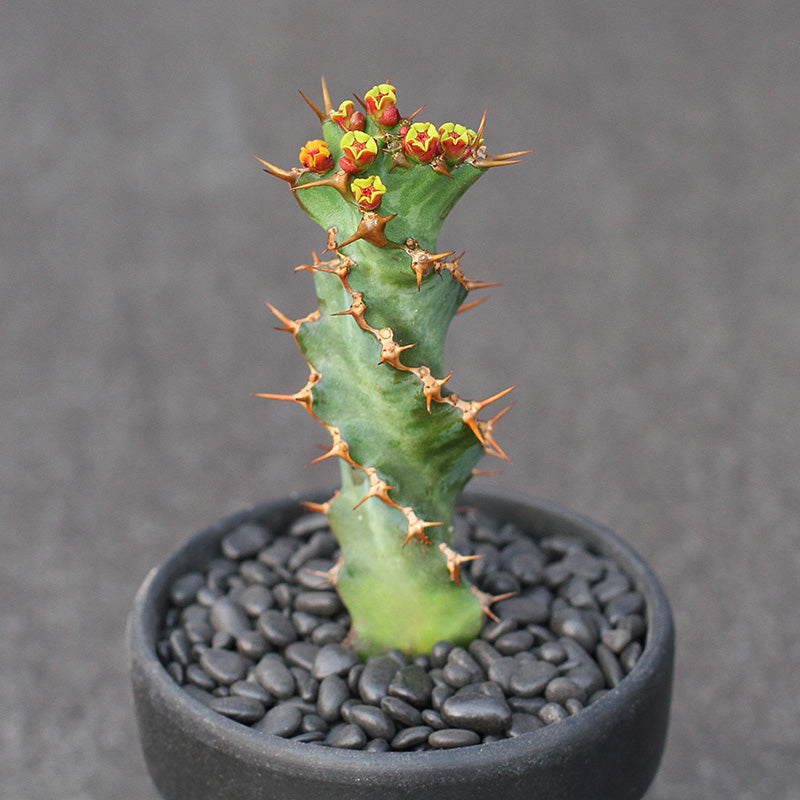The Euphorbia Tortiyama has a unique form, with its fleshy stem spiraling in a distinctive manner, making it stand out among various succulent plants. As a potted ornamental plant, it appears delicate and adorable, offering a unique visual effect.
Morphological Characteristics:
A perennial succulent plant with no leaves, the fleshy stem is cylindrical, triangular, and grows spirally, both clockwise and counterclockwise. The stem surface is green with irregular light yellow-white markings. The edges are wavy, with paired sharp thorns. New thorns are reddish-brown, while old ones are yellowish-brown to grayish-white. Small yellow flowers grow at the top or upper part of the fleshy stem.
Growing Environment:
It thrives in warm, dry, and sunny environments but is not cold-resistant. It can tolerate drought but prefers partial shade and dislikes dampness. During the growth period from April to October, ample sunlight is provided, with partial shading during the peak summer heat to prevent epidermal burns from intense sunlight exposure. However, if there is good ventilation, shading may not be necessary. It's important to prevent excessive air dryness to avoid red spider mite infestations, but the soil should not be too moist. During the growth period, the watering should be done thoroughly but infrequently to prevent waterlogging, which can cause root rot. Watering once every 20 days with diluted organic or "low-nitrogen high-phosphorus-potassium" compound fertilizer is recommended. In winter, place the plant indoors in a bright location. If the minimum temperature is above 10°C and there is a certain diurnal temperature difference, occasional watering can be done to promote growth without fertilization. If watering is reduced, allowing the plant to enter dormancy, it can withstand temperatures as low as 5°C. Repotting is recommended every 1-2 years using loose, fertile, well-draining soil with a moderate amount of lime and coarse sandy soil. A suitable potting mix consists of 2 parts humus soil, 1 part garden soil, and 3 parts coarse sand or vermiculite, with a small amount of bone meal added.
Propagation Methods:
Propagation of the Euphorbia Tortiyama can be done by taking robust and well-fed fleshy stems for cuttings during the growing season. Cuttings should be about 5 centimeters long, with attention given to removing the white latex that flows from the wound. After drying the cuttings for a few days, they can be planted in coarse sand or vermiculite. Place the pot in a well-ventilated, semi-shaded area, keeping the soil slightly moist. Roots should develop within 3-4 weeks. Alternatively, vigorous succulents like the King's Whip or the Emperor's Brocade can be used as rootstocks for grafting. After grafting, place the plants in a well-ventilated area, ensuring that the wounds remain dry and are not exposed to rain. After about 7-10 days, the wounds should heal, and normal care can resume after about two weeks. For plants with variegated patterns, cutting and grafting the part with pure and vibrant variegation can result in many small Euphorbia Tortiyamas sprouting from the top.
